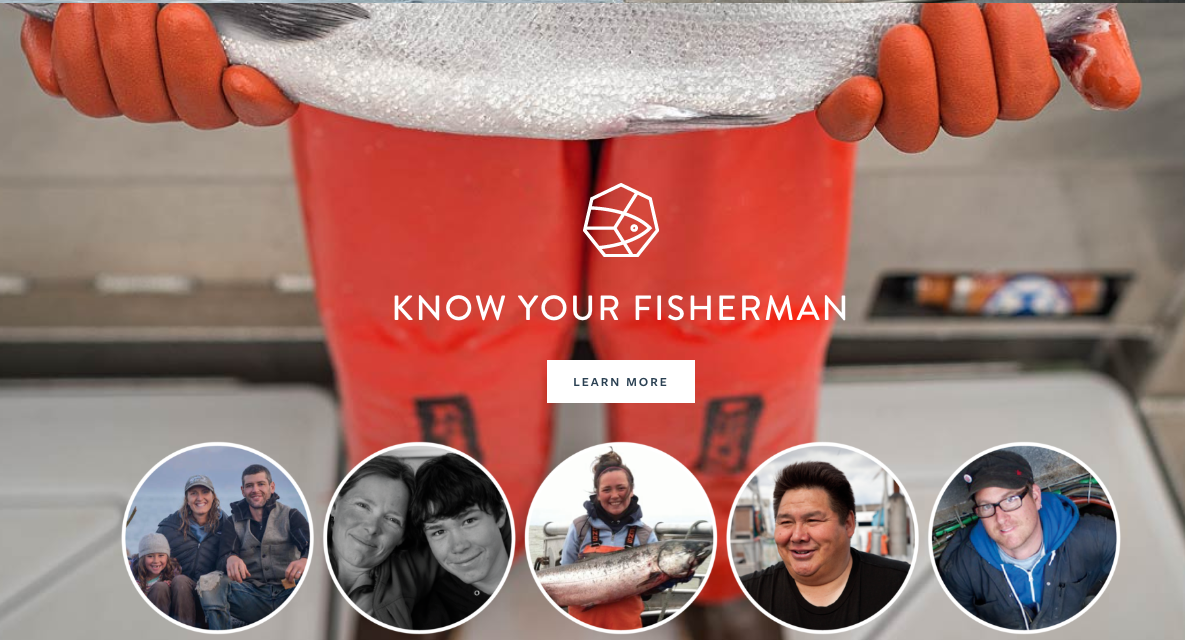Bristol Bay brand responds: Let Me Google That For You
Three years ago, a friend from Alaska was visiting our family camp in Maine and brought along two things I could not resist — wild Alaska salmon fillets and a preview of the Bristol Bay wild salmon logo. I admit I ate them both up.

The Bristol Bay Regional Seafood Development Association represents the brand through a Wegmans promotion. Rising Tide photo
What started with Copper River was expanding now to Bristol Bay, and the brand has since taken off, bringing with it higher prices and improving quality, even as landings have exploded.
That's why I was confounded by Pebble Corp.'s commentary on the Army Corps' draft environmental impact statement, which included two flat-out denials of the Bristol Bay wild salmon brand, affirmed by the draft: "There is no Bristol Bay wild salmon brand."
So are we trusting a company to run an open pit mine in the Ring of Fire when they haven't yet demonstrated their ability to Google? Asking for some friends. With a website titled bristolbaysockeye.org, the brand is not exactly flying under the radar. If you Google "Bristol Bay salmon," it's the link just above the Alaska Department of Fish and Game in the number-one spot. The branding campaign was also initiated under former BBRSDA President Abe Williams, who is also employed by Pebble and attempted to sue the association this year.

Bristol Bay salmon's logo front and center with onsite branding for the Wegmans grocery chain. Rising Tide photo
"The Bristol Bay Regional Seafood Development Association has created a robust brand identity for Bristol Bay sockeye salmon," said Andy Wink, executive director of the association. "We coordinated over 1,000 promotions for branded Bristol Bay sockeye salmon at U.S. grocery stores last year and did hundreds of promotions in 2017 as well. The pristine nature of Bristol Bay's watershed and its fish are critical marketing elements for the brand. The fact that the U.S. Army Corps of Engineers' Draft EIS made such a large mistake is further proof that this has not been a rigorous permitting process, and it raises further concerns about its objectivity."
Since the association established branding with Anchorage-based PR firm Rising Tide in 2016, the region's stakeholders haven't looked back. Bristol Bay has seen an influx of investment in fish-handling, product expansion and processing capability. All of these investments have led to a price hike, which just happens to have coincided with phenomenal returns, making for potentially record-breaking earnings out of Bristol Bay.
Icicle Seafoods was the first to report a base price this year — $1.35, which is up from an average $1.26 last year and $1.02 in 2017. The price in 2015 was 50 cents a pound — a 12-year low. If $1.35 is the average price this year for roughly 43 million fish at just over 5 pounds each, you're looking at a $300 million fishery. Last year, the $281 million value broke a record, and was nearly 2.5 times the 20-year average value.
The value and pricing trends in the years before the marketing effort began followed the trends of supply and demand — when returns were low in 2013, the value was high; when they were high in 2015, the value went down. But what is most remarkable about the marketing results is that prices and landings have gone up together, making for a staggering value increase for Bristol Bay salmon.
But I don't want to cheapen this fishery by making it all about the money. For sure, we want fishermen to be able to make a good living. And naturally we want consumers to value the harvest of wild Alaska salmon. But more than anything, don't we want to preserve iconic wild, sustainable fisheries and their critical habitats?
As the day wears on, I'm hearing reports that the EPA is planning to roll back protections for Bristol Bay, waving the red flag for the bull to charge.
We have to keep up the fight for this fishery as symbolic of all wild-capture fisheries. If a foreign company's rights for the temporary extraction of heavy metals can threaten one of the most productive wild fisheries in the world, what fishery is safe?
(Sidebar: Pebble Corp. also corrected the DEIS on its application of the scientific term Alces alces to describe Alaska's moose population, noting that the "scientific name for moose is Alces americanus." I did a quick Google to see if that was correct. What I gathered in the next five minutes — and confirmed through my primary Alaska Nerd Channels — is that this is a passé distinction between European "elk" and North American "moose." They are, in fact, genetically the same creature, and the correct name is Alces alces.)








